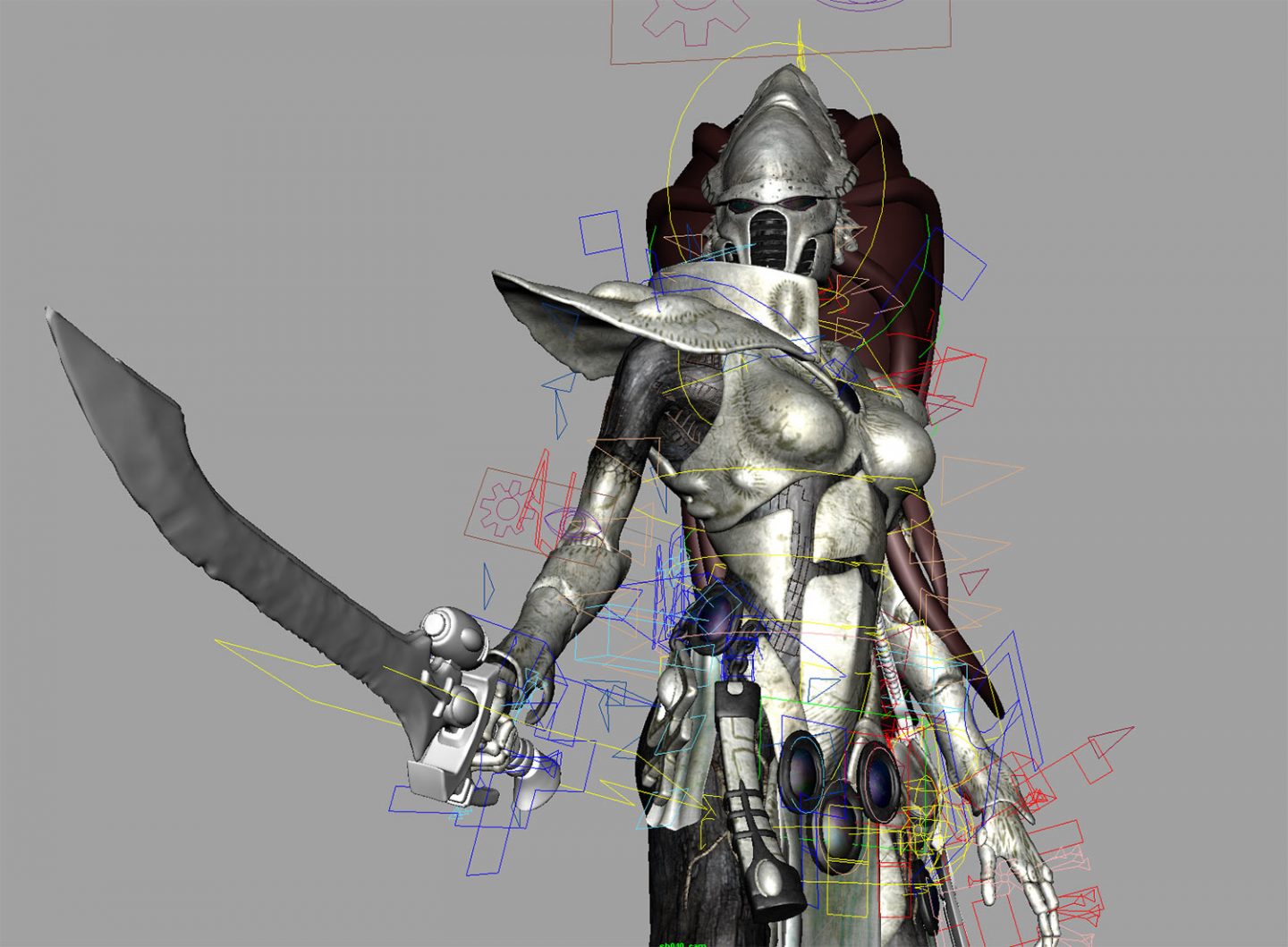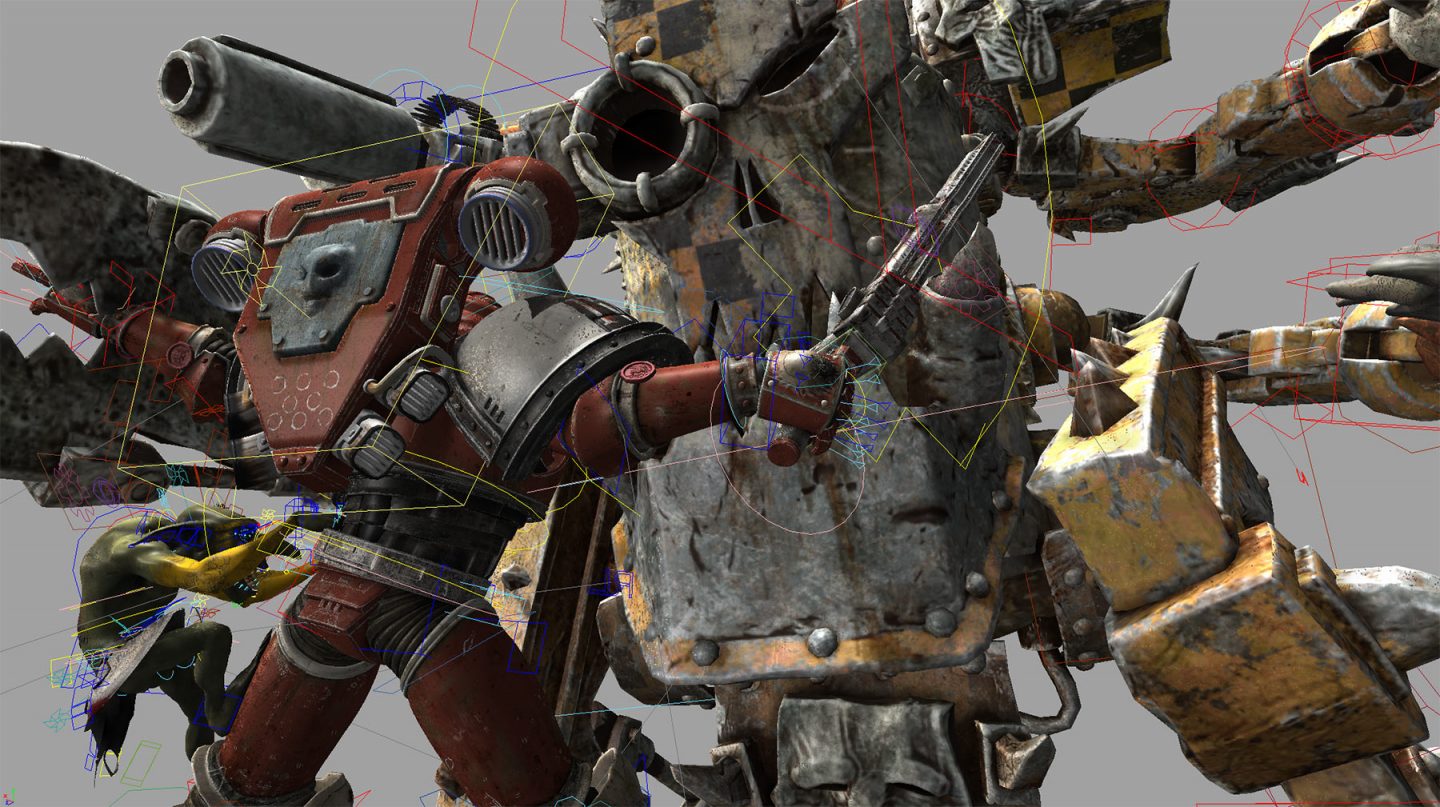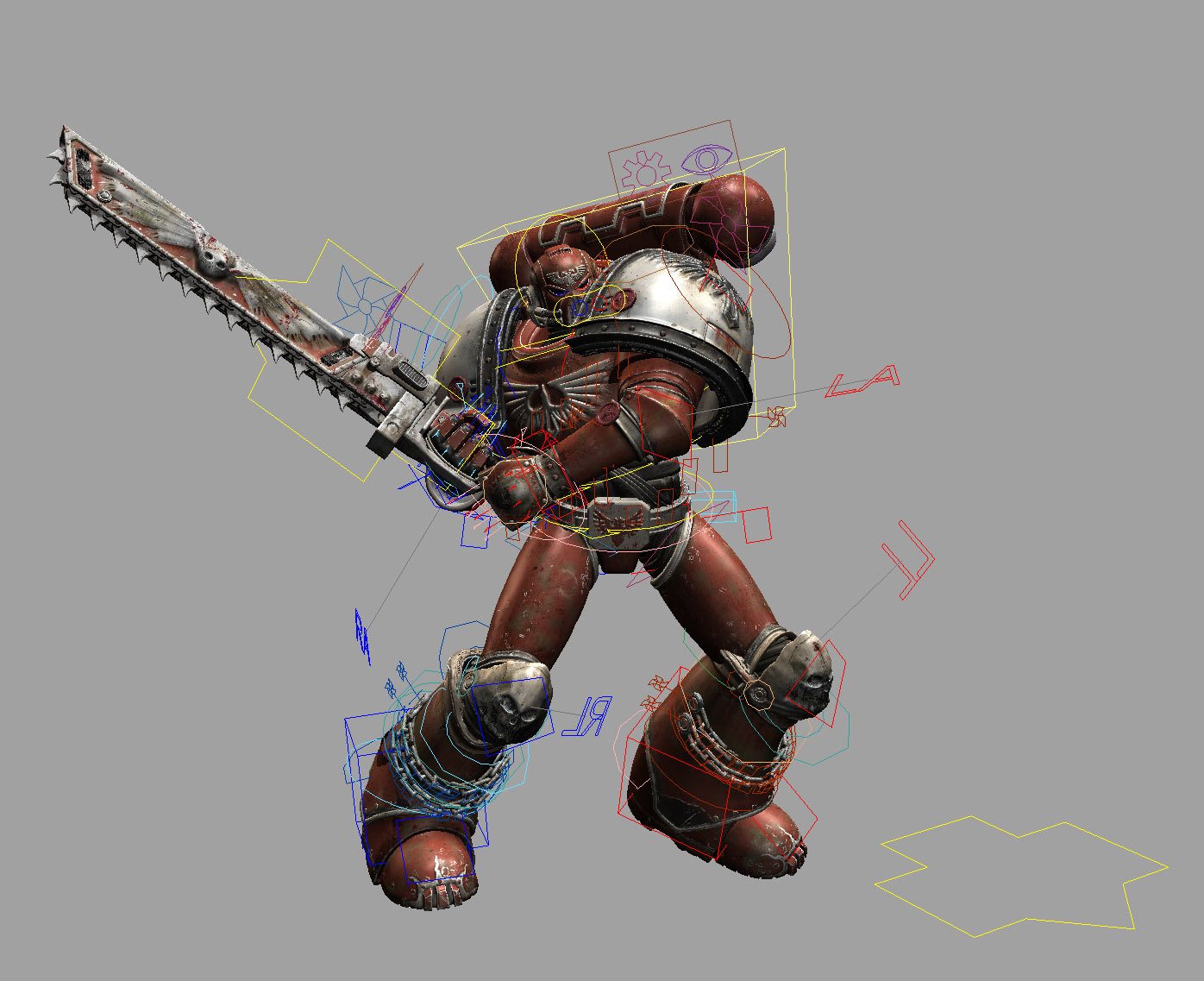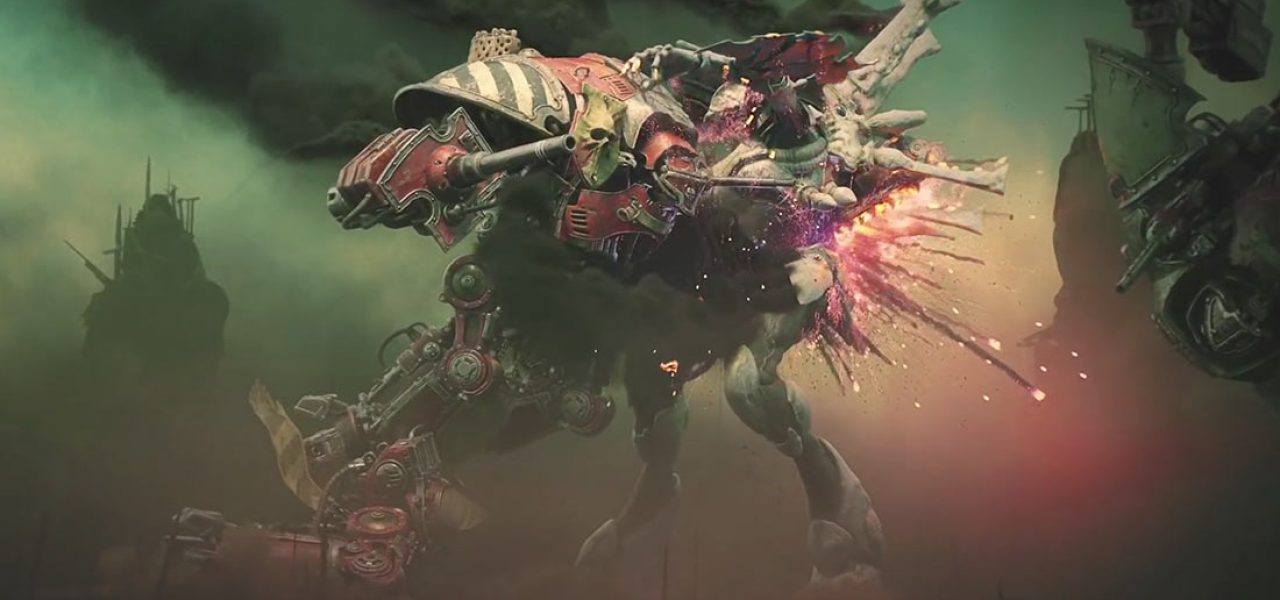
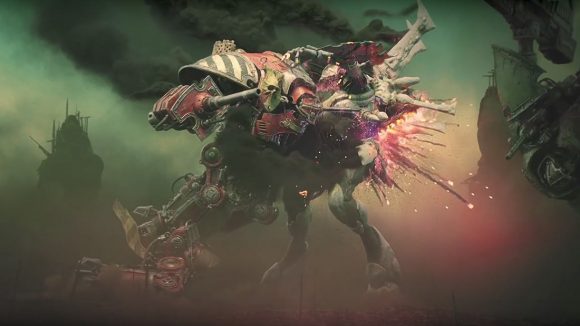
‘A Surreal Lucid Nightmare’: The Making Of ‘Warhammer 40,000: Dawn of War III’ Trailer
Watch most game trailers and you’ll tend to find impressive character modeling, complicated fight scenes, and fast-paced action. But watch the trailer for Warhammer 40,000: Dawn of War III and you get something even more: a surrealist art piece. Glasgow, Scotland-based cinematics specialist Axis Animation and director Abed Abonamous were behind this announcement trailer for game developer Relic Entertainment.
Warhammer 40,000: Dawn of War III is not due for release until 2017, but it capitalizes on the hugely successful Dawn of War video game series, itself an extension of the Games Workshop’s Warhammer 40,000 tabletop miniature wargame universe. Dawn of War III pits three interplanetary forces against each other: the Space Marines of the Blood Ravens, the Eldar, and the Orks.
Painterly influence
Each of these races is featured in the trailer, but, unlike the usual kind of imagery in game trailers, the battles between them are not immediately front and center. Working with an open brief from Relic that contained no script or singular point of reference, director Abonamous, a resident of Stuttgart, Germany with several commercials and shorts to his name, oversaw a much more low-key, abstract, and surreal approach. The first line in his treatment was actually, ‘A surreal lucid nightmare’. Axis Animation, known widely for its Dead Island trailers and Halo 5: Guardian cinematics plus other vfx and commercials work, had the necessary artists, skills, and experience to follow-through on a trailer that was both big in action and deep in artistic reference.
Indeed, Abonamous and Axis drew heavily from the surrealist painter Zdzisław Beksiński as reference in conceiving the trailer (the Polish artist’s dystopian works often depicted extreme scenes of fantastic realism). Abonamous suggests that the Warhammer 40K universe lends itself well to the “surreal and morbid feel of Beksiński’s paintings, and the treatment asked for the mysterious, nightmare-like imagery that he’d mastered so well.”
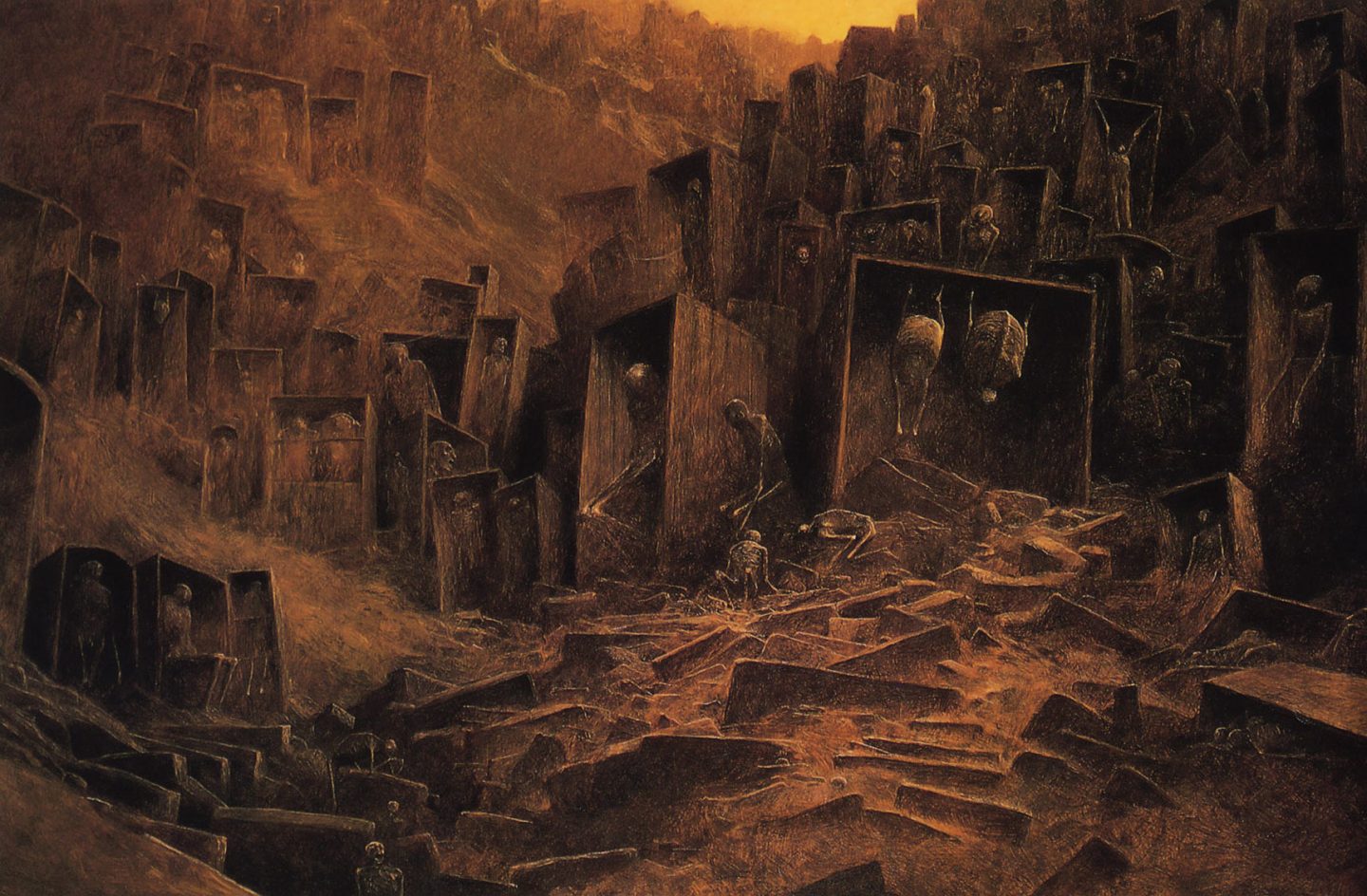
But how do you translate that kind of surrealistic style into a 3D-animated world? At the design level, Abonamous and Axis incorporated the painter’s characteristic detailing and the general abstract feel of the paintings.
Then, Abonamous explained, in shot composition they reduced what might normally be more frenetic camera motion “to get a more static painting-like appearance.” And in a technical sense, they added an incredibly dense haze and stark silhouetted lighting to mimic what often defined many of Beksiński’s pieces.
Making the game trailer: Step-by-step
With those design considerations in mind, a script was prepared and then storyboards completed before animation was blocked out in rough form. A mix of motion capture and keyframe animation, overseen by lead animator Steven Graham, was then adopted to bring the trailer to life.
Just as important was the virtual cinematography, which harked back to the inspiration from Beksiński. The intention of the camera work was to maintain the feeling of those paintings—to let the action unfold, in real time, in front of a largely disinterested camera.
Below: Watch progressive test animation for the Bone Tower destruction with effects and cloth sims added in.
However, those rules were occasionally broken to make the shots even more impactful, such as the reveal of the five-story tall Wraith knight. Producer Caleb Bouchard noted that “tilting the camera up to that giant walking by really helped inform the scale of the character to the audience in an environment that was mostly void of any reference for scale.”
Axis artists introduced the aforementioned Beksiński-inspired haze and silhouetted lighting using a specially designed tool that allowed atmosphere to be art-directed into the scenes. The tool would take basic sculpted models and convert them into signed distance field volumes (a different way of storing graphics data that makes it easier to make changes but without a loss of fidelity).
With the basic volumetric shapes as a basis, the software was then able to procedurally and interactively generate realistic looking animated clouds which, when rendered, had a very fine level of detail. Fluid sim techniques were also used when the atmosphere had to interact with animated assets, resulting in “some of the heaviest simulation jobs we have undertaken,” said cg supervisor Sergio Caires.
Further texture to the game trailer came from additional elements such as the destruction and fire effects seen once the characters begin to fight. Since these characters were huge in frame, but still very agile, scale was a challenge to get right. Axis began by simulating large smoke trails on an initial wide shot of the Imperial knight penetrating his sword through the Wraith knight. Then, smaller pieces of debris plus other explosions and dust were added. Head of FX Hudson Martins said that 20 separately simulated elements were rendered just for that sword shot.
A preview of what’s to come
What’s perhaps most interesting about the Dawn of War III game trailer—a six-month long project involving 40 artists at Axis—is its artful approach that still provides a thrilling glimpse into the gameplay of the upcoming video game.
Still, don’t expect the trailer to have revealed everything for next year’s release. Abonamous says his team “consciously avoided spoiling any actual story details, opting to go for the general feeling of dread and impending doom that is present in both Warhammer 40K and Dawn of War III instead.”
